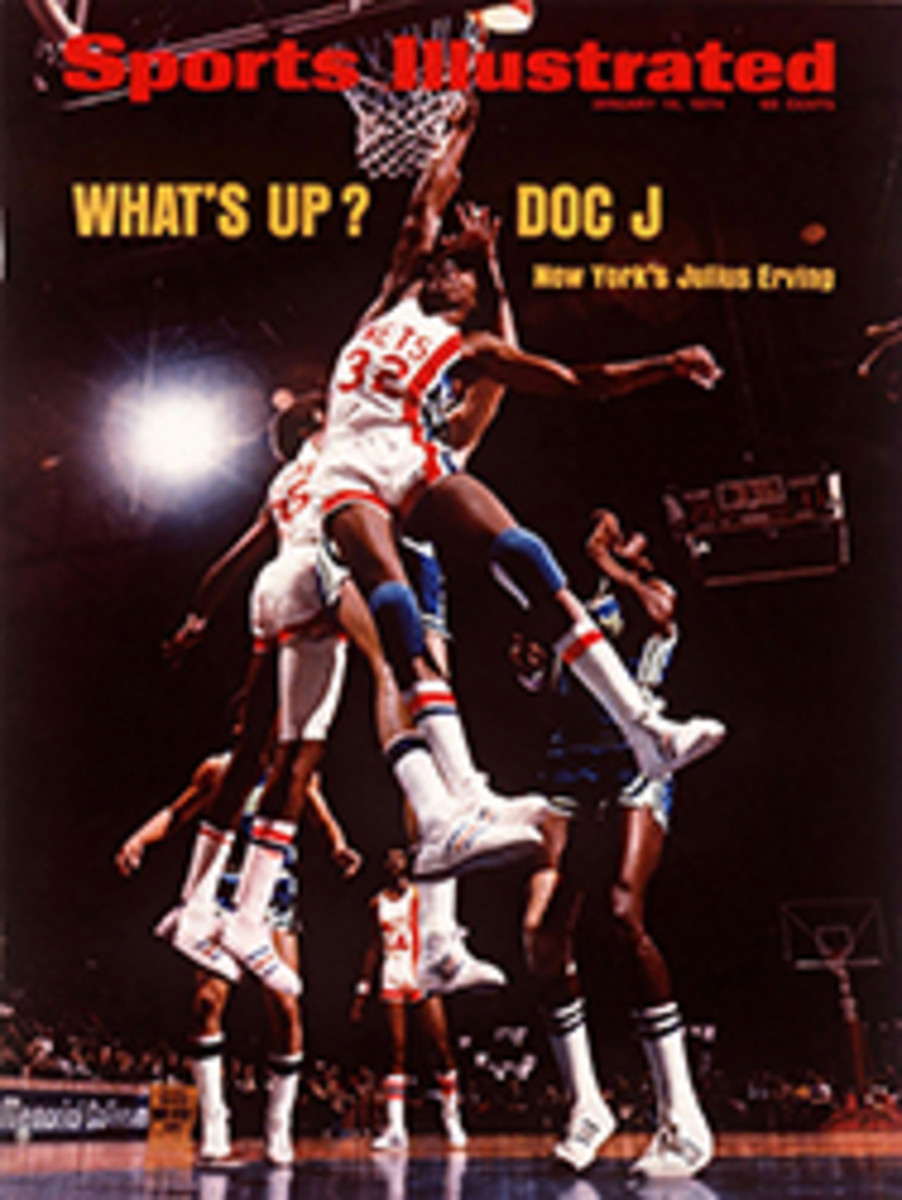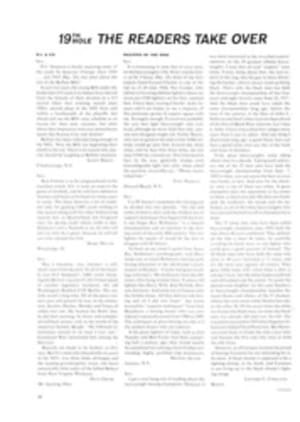
JOYEUX JOINT FOR JUMPING JACQUES
The outside world was little aware of the Pyrénées-Atlantique region of France before 1814, when some of the Duke of Wellington's officers began rattling around the country doing their warmups for the Battle of Waterloo. One of them, legend has it, was so carried away by the sight of the lovely, rolling land that he said, in effect, "Chaps, this place is a blast. Jolly perfect for hunting and racing, too. It's just like England!"
That didn't exactly do it. It was another 50 years before a good 3,000 Englishmen had pushed their way 90 miles inland from the watering spots of Biarritz and St.-Jean-de-Luz on the Atlantic coast and settled in Pau, a somnolent and ancient provincial capital with an absolutely dazzling view of the Pyrénées. The birthplace of Henry IV, Pau is a resort town with summers and winters that are as soft as dulcimer music, and through it runs the Boulevard des Pyrénées, an elevated promenade begun by Napoleon I in order to give everybody a better look at such marvels as the Pic d'Anie and the Pic du Midi de Bigorre, 50 miles away.
It was in Pau that the sport of Le Steeple had its humble French beginnings 130 years ago. While steeplechasing dies in the U.S.—Saratoga alone of major U.S. tracks presents jump races, and at last summer's 24-day meeting it staged only 15 of them—it thrives in France, where there are almost as many jump riders as flat jockeys, a season that runs year around and 211 courses for jumpers. None of them, outside of Auteuil's championship layout in Paris, is as challenging to horse and rider as Pau.
The tests at Pau come in various forms: hurdles, steeplechase jumps and cross-country obstacles, 40 in all, laid out over a dozen and a half different courses. The season is from mid-December through mid-February, Wednesdays and Sundays only, and, says an exhilarated Major Guy Cunard, England's living point-to-point chase master, "dangerous."
Cunard really is referring to the once-a-day cross-country chase, a terrifying three-mile grind across slightly uneven terrain and over 25 jumps that range from what the English call a plain fence (about 5'5") to an open ditch, a stone wall, several brooks, a double-bar jump, a 15-foot-wide Oxer (double hedges), the traditional French Bullfinch (slanted mound topped by what look like fagots), a devilishly tricky Irish bank, an even trickier in-and-out jump and the usual water jump, least of the hazards. A one-third survival rate is about par for the course, although, surprisingly, there are few serious injuries. The three steeplechases and three hurdles on the same card are, comparatively, cakewalks.
All of this takes place before a strikingly handsome, three-year-old glass and concrete grandstand that, with its manicured walking ring and neatly arranged receiving stalls, has helped turn the old Hippodrome de Pau into a mini-Long-champ. The country turf enthusiast, joined occasionally by swells down from Paris, sips his Beaujolais or Bordeaux three floors above the action and waits, somewhat apprehensively, for his specially tossed omelette aux truffes, the while casting his eye out over the splendidly appointed downs. Wandering through the stands and restaurant is a steady parade of elegantly dressed stewards who, for reasons unexplained, always seem to be addressed as "Monsieur le President." Other than that, all is subdued. Even the fans, who might number 2,000 on Wednesdays and 4,000 on Sundays, go about the serious business of betting without so much as a loud cheer or an audible criticism. Jockeys, no great celebrities at Pau, are often seen carrying their own tack before saddling up.
There is far more noise, if only for the baying of the hounds, at the weekly Saturday hunt, which has been a Pau fixture and something of an American province almost from its inception in 1840. Masters of the fox hunt have included James Gorden Bennett, Neilson Winthrop, W. K. Thorn, C. H. Ridgeway and, from 1910 to 1940, Fredrick H. Prince, a Chicago and Newport meatpacking gentleman who believed a respectable hunt never got under way before 12:30 p.m. Gone now are the pink coats and the ladies mysterious in their veils galloping side-saddle past working farmers, but under Baron d'Ariste, master since 1960, the spirit is there. The hunt rides off at half past noon, crossing cornfields and the open ditches of old, allowing ample checks to remount the fallen. It ends two hours later at a country inn in time for the traditional post-hunt breakfast, a six-course, three-hour gastronomic romp.
If the hunt and hurdles are not horses enough, there is always Haras de Gélos outside of Pau, one of 23 national studs. Napoleon bought the fine chateau for the stud in 1807 and it has been a republican undertaking since, providing thoroughbred stallions as well as heavily muscled workhorses, Arabians, Anglo-Arabs and wild-eyed Welsh ponies at astonishingly low cost to all comers. Pau, pronounced like the Southern po' boy, is plain rich.
PHOTO
JERRY COOKE
Circling clockwise against a soft, winter backdrop of hardwood and spruce, steeplechasers go over a fence on the elegant pinedotted Pau course.
PHOTO
JERRY COOKE
Spills like this one over the Passage de Route are the price of Pau which, along with the Auteuil track in Paris, is the most challenging on the Continent.
PHOTO
JERRY COOKE
Led by Baron d'Ariste, the Saturday hunt, a tradition that goes back 130 years, starts in leisurely fashion at a civilized hour, 12:30.
PHOTO
JERRY COOKE
As much a social as sporting event, the hunt ends two hours later in a cornfield, from which everybody repairs to a country inn for brunch.
PHOTO
JERRY COOKE
A uniformed groom shows a stallion to prospective breeders at the Haras de Gélos, one of France's 23 national studs, not far outside Pau.
PHOTO
JERRY COOKE
Although it raises visions of headlong splashes, the water jump close to the stands is more a stimulus to graceful exercise than a danger.
PHOTO
JERRY COOKE
Seven presiding commissioners, all local gentry, follow the races from the stewards' pavillion before retiring to a dining room in the rear.
PHOTO
JERRY COOKE
Seldom crowded on weekdays, the Hippodrome offers ample space for bettors to study form and plot triplets (three top finishers) in the sun.

